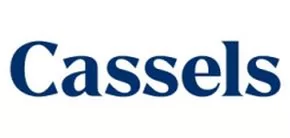- within Food, Drugs, Healthcare, Life Sciences, Cannabis & Hemp, Litigation and Mediation & Arbitration topic(s)
- with Senior Company Executives, HR and Inhouse Counsel
- with readers working within the Business & Consumer Services, Healthcare and Media & Information industries
On March 21, 2025, the Ontario Court of Appeal upheld the certification decision in Lochan v. Binance Holdings Limited.1 The class action was brought by Canadian investors who purchased cryptocurrency derivative products from Binance Holdings Limited, Binance Canada Capital Markets Inc., and Binance Canada Holdings Ltd. (collectively, Binance). On the initial certification motion,2 the investors made claims for damages and rescission of their contracts under s. 133 of the Ontario Securities Act (OSA) and at common law, asserting that the cryptocurrency sales were void due to Binance's failure to register as required under the OSA and for its failure to file a prospectus.
While the outcome of a certification motion is not predictive of the success of the action at the trial of the common issues,3 the Court of Appeal's dismissal of Binance's challenge to the certification offers insights into how cryptocurrencies may be addressed through class actions.
Reasonable Cause of Action: A Purposive Interpretation of the OSA May Provide Prospectus Remedies in the Absence of a Prospectus
Binance argued that the motion judge erred in finding a reasonable cause of action since the remedy of recission or damages, provided for by s. 133(1) of the OSA for failure to comply with s. 71(1), is only available when a prospectus has been filed, but not delivered, to a purchaser. While Binance acknowledged that they failed to file a prospectus as required by s. 53(1), they maintained that they did not and could not fail to fulfill s. 71(1) to deliver a prospectus given that one was never filed in the first place. Accordingly, Binance argued that no remedy under s. 133 could be available for the transactions.
On the certification motion, Binance relied on the decision in Jones v. F. H. Deacon Hodgson Inc.4 to support their textualist approach to s. 71(1) and focused on the use of the word "filed" in the OSA. Since the motion judge did not consider Jones, which has never been overturned, Binance argued that a reversible error of law was made and that the class action should not have been certified.
The Court of Appeal disagreed, stating not only that Jones is not binding authority (which remains for the trial judge to consider), but that there were "good reasons" to doubt the correctness of its finding that s. 133 does not provide a remedy if no prospectus was filed. The Court noted that the words of the OSA must be interpreted in a way that corresponds with its statutory purpose, which the Supreme Court of Canada has described as remedial and requiring a broad interpretation.5 Given these reasons, the Court of Appeal did not find that the class members' statutory claim was certain to fail. It cautioned that the textual interpretation of the OSA proposed by the appellants, rather than a purposive one, appears inconsistent with the OSA's statutory purposes and would ultimately "reward prior non-compliance and may well create an incentive for issuers not to file a prospectus, thereby reducing the disclosure available to investors."6 The Court of Appeal also noted that Jones adopted this interpretation in order to provide a remedy to purchasers of a security from a dealer who had failed to file a prospectus, whereas the appellants invoke Jones for the opposite purpose: to deny the appellants a statutory remedy. A statutory remedy of recission or damages may be available even if a prospectus is not filed.
Importantly, the Court of Appeal emphasized the need for a purposive interpretation of the OSA in the specific context of cryptocurrencies. Given that the Capital Markets Tribunal (CMT) has described cryptocurrency derivatives as "novel and complex products that are inherently risky" that present "serious investor protection concerns" when available for retail purchase,7 the Court of Appeal suggested that adequate disclosure and the availability of remedies for class members are particularly important for securities of this nature.
For similar reasons, the Court of Appeal did not accept Binance's argument that there was no cause of action under common law. Binance argued that the definition of "trade" in s. 1 of the OSA captures both purchasers and sellers, so the class members themselves would have been illegally trading in securities by failing to file a prospectus, and were not therefore entitled to a common law remedy. The Court of Appeal held that it was not plain and obvious that the legislature intended to limit common law rights through the definition of the word "trade" in the OSA, and that it was not practical to expect "thousands of unsophisticated investors [to] have undertaken the complex task of preparing a prospectus before selecting and clicking on their preferred Cryptocurrency Derivative on the Binance website."8
Cryptocurrencies on the Class Action Stage
In focusing the certification appeal analysis on whether it was "plain and obvious" that the statement of claim failed to disclose a reasonable cause of action, the Court of Appeal noted that the nature of cryptocurrencies is currently infused with complexity and uncertainty. Accordingly, this decision may suggest that class actions can provide a viable forum for litigating securities disputes related to crypto assets. The investor protection concerns also mean that the OSA's remedial purpose cannot be ignored when considering the regulation of cryptocurrencies.
Additionally, the Court of Appeal's decision to uphold this class certification, while recognizing ongoing litigation between the Ontario Securities Commission (OSC) and Binance with respect to cryptocurrency regulation,9 could indicate that the issue of cryptocurrency purchasers' rights and remedies are separate from sellers' regulatory obligations to the OSC, extending the realm of liability and risk for crypto asset companies. In some instances, regulatory actions can temporarily delay class actions if they involve overlapping issues or if courts opt to wait for regulatory findings before proceeding, but the Court of Appeal's decision indicates that this may not be the case for crypto assets.
The Court of Appeal's "plain and obvious" analysis and its recognition of ongoing regulatory litigation could also indicate its reticence over analyzing how cryptocurrencies operate as securities. The Binance decision supports that remedies for purchasers of cryptocurrency derivative products can be sought through class actions if there is "some basis in fact" to substantiate claims. Despite the Court of Appeal's comments on the status of crypto assets as securities, the Court did not extend their comments or analysis to spot trades. The question of whether cryptocurrency platforms offering exclusively spot crypto trading are dealing securities remains unanswered by Ontario courts. Nevertheless, the Court of Appeal's reliance on two CMT decisions,10 which classify both spot crypto assets and derivative crypto assets as securities, suggests that Ontario courts will continue to look to regulatory tribunals when tasked with determining how cryptocurrencies interact with the OSA.
In the common issues trial, Binance will likely advance similar arguments that it presented in its appeal of the class action certification but that were not evaluated on the merits and may introduce additional arguments. The common issues trial, along with the advancement of ongoing regulatory litigation, may provide more guidance on some of the outstanding questions related to cryptocurrency assets we've highlighted in this and other Cassels Comments, but timelines for these proceedings have not yet been set.
Takeaways
The OSC has committed to identifying and addressing non-compliance with securities laws in the crypto asset sector.11 With the Binance case permitted to move forward and the OSC's plan to pursue enforcement against non-compliant crypto trading platforms (CTPs), Canada may see an increasing number of cryptocurrency class actions following enforcement actions. CTPs operating in Canada should be vigilant and proactive in their compliance with various guidelines and recommendations by various securities regulators.
Footnotes
1. Lochan v. Binance Holdings Limited, 2025 ONCA 221 [Binance].
2. Lochan. v. Binance Holdings Limited, 2024 ONSC 2302.
3. Pro‑Sys Consultants Ltd. v. Microsoft Corporation, 2013 SCC 57, at para. 105.
4. Jones v. F. H. Deacon Hodgson Inc. (1986), 1986 CanLII 2559 (ON SC), 56 O.R. (2d) 540 (H.C.) [Jones].
5. Kerr v. Danier Leather Inc., 2007 SCC 44, at para. 32.
6. Binance, at para. 44.
7. Polo Digital Assets, Ltd. (Re), 2022 ONCMT 32, at para. 68; Mek Global Limited (Re), 2022 ONCMT 15, at para. 64.
8. Binance at para 55.
9. See e.g. Binance Holdings Limited v. Ontario Securities Commission, 2024 ONCA 805.
10. Polo Digital Assets, Ltd. (Re), 2022 ONCMT 32; Mek Global Limited (Re), 2022 ONCMT 15.
11. The Ontario Securities Commission, "For the fiscal years ending 2025-2027 OSC Business Plan" (29 April 2024), online (PDF): osc.ca/sites/default/files/2024-04/pub_20240429_osc-2025-2027-business-plan.pdf.
The content of this article is intended to provide a general guide to the subject matter. Specialist advice should be sought about your specific circumstances.






